
Eliza Wheeler is the fascinating illustrator of many books, including John Ronald’s Dragons: The Story of J.R.R. Tolkien, The Pomegranate Witch, and Tell Me a Tattoo Story. You can read about her work on her Wheeler Studio blog. For this interview, we are focusing on a series she has illustrated for Candlewick Press, the Cody books by Tricia Springstubb.
Your attention to detail is astounding. Do you work on an illustration from start to finish before beginning the next one?
Thank you! I don’t work on illustrations from start to finish, but rather develop several at a time. For the Cody books, I worked on all the sketches at once, then inked all the linework, then finished with all the watercolor washes. This helps when I’m trying to meet a deadline, because each stage has its own unique set-up.
Do you decide where an illustration is appropriate within the text?
Deciding on where illustrations will be is usually a collaboration with the art director. I read through the book for the first time and make notes about scenes that stand out as ones I’d have fun drawing, but also we’re having to think about spacing illustrations out evenly in each chapter. In the Cody book series, we tried to make an illustration land once every 2-3 spreads.
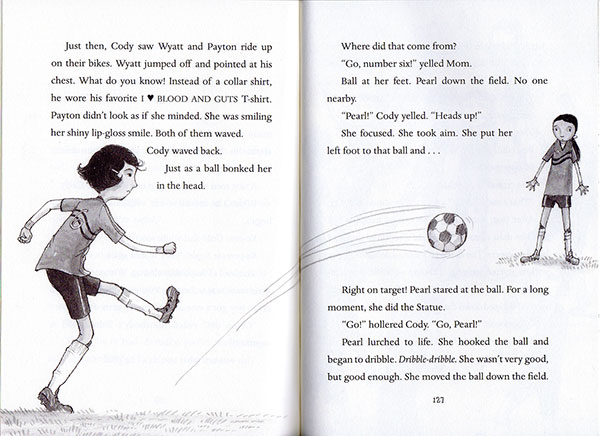
Do you figure out if it will be a spot illustration or if it will spread across two pages? Do you decide where an illustration will be on the pages?
When I sign the book contract, it’s stipulated how many spots, half page, full page, and spread illustrations there will be. So when I begin getting ideas for the illustrations, I’m deciding which format would work best for that particular one (with the help of the art director). For the Cody books, I was encouraged to find varied placements for the illustrations on the page, and as long as it worked with the text space, I tried to have fun with the position of the illustration.
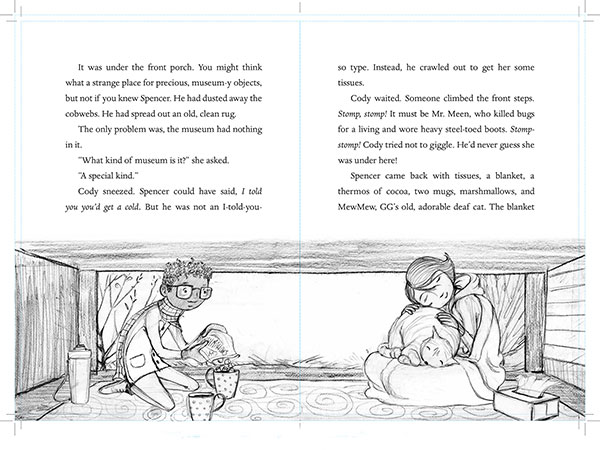
Do you work with an art director? What kind of direction does that person give you? Do you have to edit your illustrations?
For chapter books I work with the art director, but for picture books I’m often working with both an art director and the book’s editor. The art director helps me decide if an illustration is working, how the illustrations are flowing from page to page, whether I might be missing details from the text, if a character isn’t looking quite right, or if I’m being consistent with scene details. There’s a lot of teamwork involved in making books, and there are always many steps of edits and revisions along the way to get things working well.
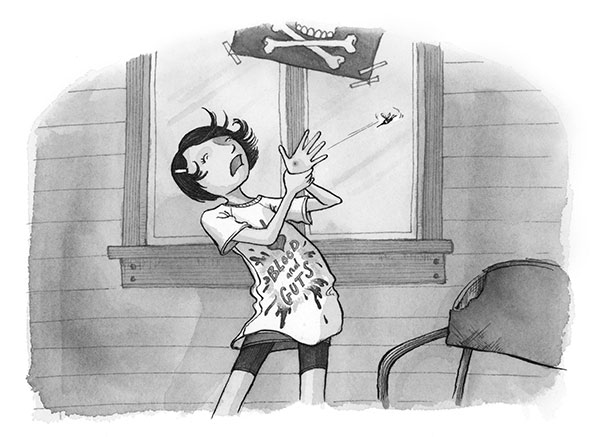
I love Wyatt’s t-shirts. Why do you take such care with designing them?
Wyatt’s shirts are featured in a few places in book 1 and 2, and Cody is often “borrowing” them from Wyatt’s bedroom. This is Tricia Springstubb’s clever way of showing us more about Wyatt as a character, as well as Cody’s relationship with him. Key advice that writers hear is “show, don’t tell”, and I think Tricia is a master of this with this book series — she makes it look effortless. Because Tricia’s taken the care of incorporating these visual elements in the text, it’s become a part of who Wyatt is — he wears himself on his sleeves! I like to infuse all of his clothes with his personality when I can.
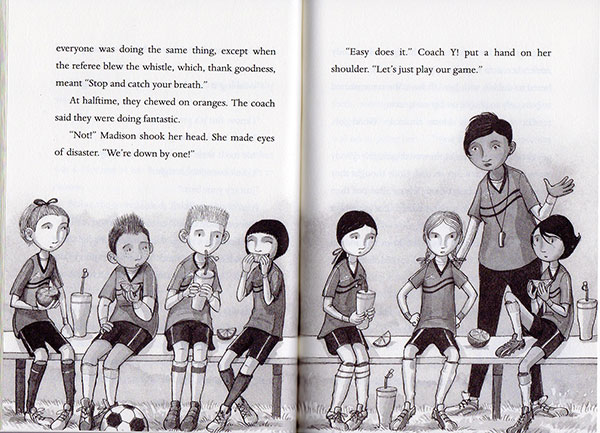
On pages 54-55 (hardcover), all of the feet and the shoes are unique to each person. There is no sense that you’re drawing the same person over and over. How do you manage this?
It takes a little extra time, but even when there are side characters that don’t come into the story, I like to try to give them their own identity. One way that I do this is by looking up photos of kids in groups, on sports teams, or class photos. Referencing real kids makes it fun and easy to design groups of characters.
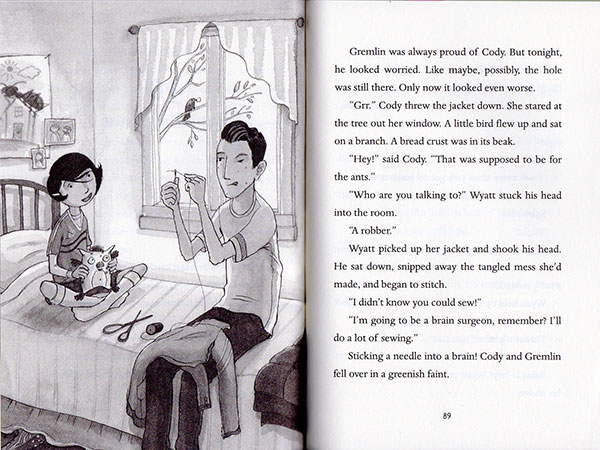
On page 88, when you draw a bird on a branch, it has something in its mouth. Why do you weave these details into your drawings?
Adding little scene details are always important to me, whether they’ve been described in the text or not, because I feel that they add validity and interest to the story world. If we have a scene in Cody’s room, I try to add objects around that reflect her personality. Also, I think kids have a much better eye for details than adults do, and it’s something I remember caring about a lot as a kid (and still do as an adult).
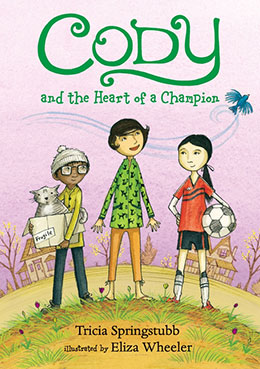
Cody and the Heart of a Champion
How do you decide the subject of the cover … and the color palette for that cover?
I try to come up with an image that I feel captures the general spirit of the book — it should give a sense of the characters, the setting, and any prominent themes in the book. When I started the Cody book series with book #1, I gave the art director and editor several ideas for different layouts to choose from, and we revised those ideas until we landed on what the book covers are now. For the books that followed, it was a matter of keeping the same general cover layout, but trying to give it a unique theme and color scheme, so that the books look like they belong to each other while also standing on their own. One thing that helped was that each book happens over a different season during one year, so I was able to be inspired by the colors of each season.
Do you work on the illustrations for one book at a time?
For books in a series, yes, I work on one book at a time in sequence. Often the author is writing the next book while I’m illustrating their previous book. In general, I’m often juggling book projects; illustrating for chapter books, middle grade, and picture books at the same time, and jumping between book worlds can be challenging!
Do you have any tips for drawing characters consistently?
Yes! That is a particularly challenging task. I start the series by doing Character Studies of the book’s characters, and for each book add sketches of new side characters as they’re introduced. After each book is finished, I collage together a document with images of the characters throughout the series, so that I can compare character drawings in the new book to make sure they look right.
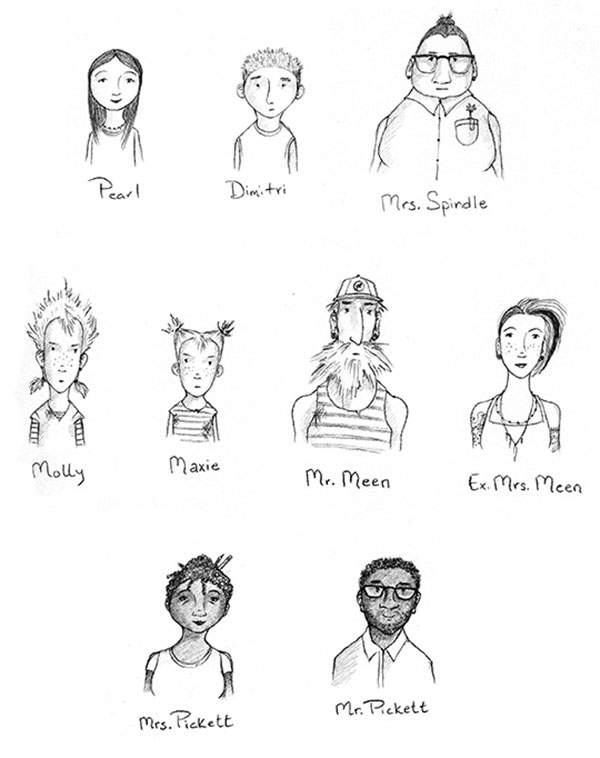
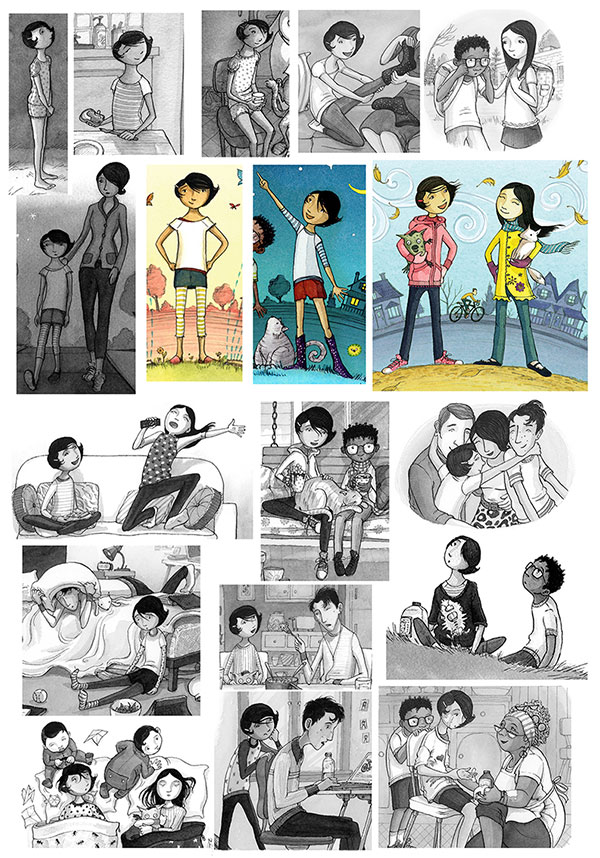
___________________
Thank you, Eliza, for helping us better understand how you infuse enchantment into the books you illustrate. The care you and Tricia take makes Cody an unforgettable character.
Learn more about Eliza Wheeler.

Thank you for these insights. I can see why your work is in such demand!